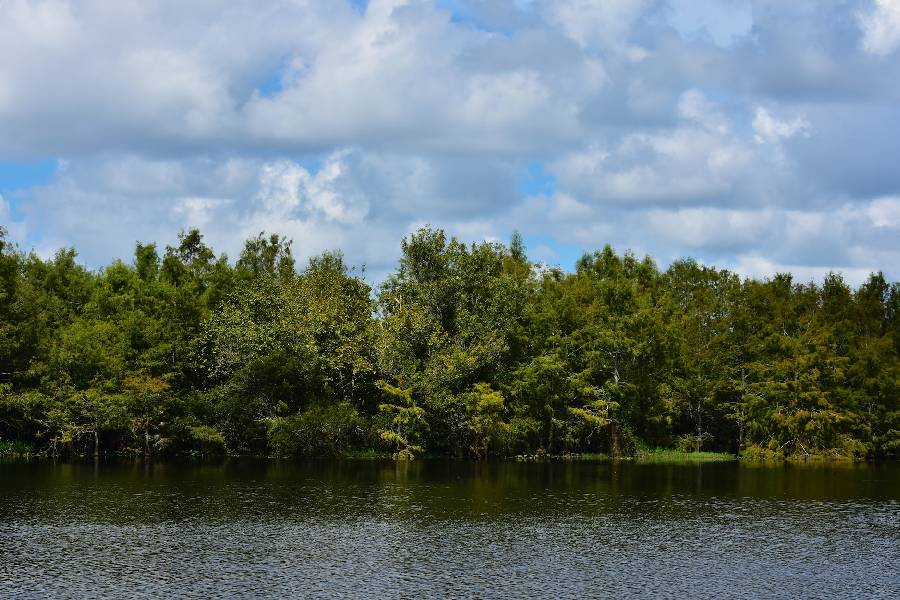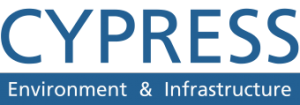We recognize that infrastructure development must balance progress and preservation. An innovative approach to making this possible is mitigation banking. But what is mitigation banking, and how does it enable us at Cypress Environment & Infrastructure to achieve sustainable growth?
In this article, we will explain the concept of mitigation banking and explore its environmental and economic benefits. We will also discuss how mitigation banking helps us balance development and conservation for every project.
We will also examine how this market-based tool provides a framework for offsetting unavoidable environmental impacts. We aim to highlight how mitigation banking allows continued infrastructure growth while funding the restoration of wetlands, forests, and other critical ecosystems.
Let’s get started!

What Is Mitigation Banking?
Mitigation banking is a system designed to offset or compensate for the environmental impacts of certain activities, primarily land development projects. When we at Cypress Environment & Infrastructure think that a project may harm natural habitats, wetlands, or water bodies, mitigation banking offers us a solution.
The fundamental idea is to conserve or restore an equivalent or greater area of environmental resources to mitigate the adverse effects of the development.
Mitigation banks, which are essentially areas set aside for preservation, restoration, or enhancement, play an essential role in this process. They generate mitigation bank credits when they successfully improve or protect the environment. These credits can be used by developers or other parties to counterbalance the harm caused by their projects, also known as “debits”.
How Mitigation Banking Works?
Mitigation banking is a unique system that relies on core components and processes to achieve its goals. They are the following:
- Mitigation credits — These are the linchpin of the mitigation banking process. Mitigation banks generate credits when they successfully protect, restore, or enhance an area of environmental resources. The number of credits reflects the environmental value added or conserved by the bank.
- Mitigation debits — Debits represent the environmental impacts of specific projects, such as land development or infrastructure construction. For each of our projects, a certain number of debits is calculated based on the potential harm to the environment.
- Mitigation banks —These are established and managed by agencies, organizations, or entities specifically to generate mitigation credits. Mitigation banks are often located in ecologically significant areas that require preservation, restoration, or enhancement.
Obtaining and Using Mitigation Credits
The process of obtaining and using mitigation credits can be broken down into several steps. For example, they can be:
- Impact assessment — When we plan a developmental project, a thorough environmental impact assessment is conducted. This assessment identifies the potential environmental harm the project may cause.
- Credit acquisition —After assessing the project’s environmental impact, our developers can purchase mitigation credits from a certified mitigation bank. The debits generated by the project determine the number of credits needed.
- Restoration and preservation — Once acquired, mitigation credits are used to fund the protection, restoration, or enhancement of the environmental resources found within the mitigation bank.
- Credit certification — Regulatory agencies certify the credits, ensuring that the environmental improvements meet specific standards and requirements.
- Project offset — With certified credits in hand, the project can proceed. These credits effectively offset the harm caused by the development.
Mitigation Banking vs. Traditional Approaches
Mitigation banking distinguishes itself from traditional mitigation methods in several ways. It offers an innovative and often more effective approach to environmental conservation.
Comparing mitigation banking to traditional mitigation methods
Mitigation banking stands in contrast to traditional methods, where developers individually address the environmental impact of their projects.
In traditional approaches, each project attempts to mitigate its specific environmental harm, often on-site or in a nearby area. This can result in a fragmented and less effective conservation effort.
Benefits of mitigation banking over individual project mitigation
Mitigation banking offers several advantages over traditional mitigation:
- Economy of scale — By consolidating mitigation efforts, mitigation banks can often achieve economies of scale. They can manage larger, more ecologically significant areas, creating a more effective conservation outcome.
- Certainty and predictability — Mitigation banks provide our developers with a predictable and readily available source of mitigation credits. This predictability is essential for project planning and execution.
- Enhanced environmental outcomes — Due to their scale and expertise, mitigation banks can achieve more successful outcomes regarding resource protection, restoration, and enhancement.
Mitigation banking in practice
Real-world scenarios frequently demonstrate the practicality and advantages of mitigation banking over traditional methods. In cases where projects affect large, ecologically valuable areas or multiple projects are planned in a region, mitigation banking offers a more cohesive and ecologically effective solution.
Mitigation banks help streamline regulatory processes and ensure that environmental protection is consistent, efficient, and impactful.

Regulatory Framework
Mitigation banking operates within a well-defined legal and regulatory framework, ensuring that it meets specific standards and requirements.
Legal and regulatory aspects of mitigation banking
A comprehensive framework of laws and regulations governs mitigation banking. This framework establishes the rules and procedures for mitigation banking, encompassing both federal and state levels of governance. So, key aspects of the regulatory framework include:
Federal oversight
Several federal agencies, such as the U.S. Army Corps of Engineers and the Environmental Protection Agency, play a crucial role in overseeing and regulating mitigation banking programs.
State involvement
States also have regulatory authorities, often represented by agencies like state departments of environmental protection, that oversee and authorize mitigation banks.
Compliance requirements and standards
Mitigation banking programs are subject to rigorous compliance requirements and performance standards to ensure that the environmental goals are met effectively. These standards encompass credit calculation methodologies, ecological monitoring, and financial assurances. They guarantee that mitigation efforts are successful and sustainable.
Types of Mitigation Banking
Mitigation banking covers various types of environmental mitigation, each aimed at conserving or restoring specific aspects of the environment. Understanding these mitigation types provides insight into the broad scope of mitigation banking.
Habitat preservation
Mitigation banking often involves habitat preservation. This may include setting aside land to protect vital ecosystems or endangered species. These preserved habitats act as safe havens for biodiversity.
Wetland restoration
Another common form of mitigation is wetland restoration. Wetlands are crucial ecological features that support diverse plant and animal life. Mitigation banks may focus on the restoration and enhancement of wetland areas, ensuring they remain ecologically robust.
Challenges and Considerations to Mitigation Banking
Mitigation banking, while a practical approach to environmental conservation, has challenges and considerations. It’s essential to acknowledge these aspects for a comprehensive understanding.
Limitations, monitoring, and long-term success
Mitigation banking, like any complex environmental endeavor, has its limitations. Some of these limitations include:
Financial costs
Establishing and maintaining a mitigation bank can be financially demanding. This can lead to challenges in making mitigation banking financially feasible for specific projects.
Monitoring and enforcement
Long-term monitoring is crucial to ensuring the success of mitigation banks. The need for monitoring, however, requires an effective system and resources, which can be logistically challenging.
Long-term success
The long-term success of mitigation banks hinges on their ecological outcomes. For a mitigation bank to be truly successful, it should provide ecological benefits that are sustained over time. However, achieving this success often presents challenges.
Case studies and examples
To illustrate the effectiveness and potential of mitigation banking, examining successful projects is crucial. We can explore specific case studies that showcase the success of mitigation banking. Some examples might include:
- ELI Study — this was a 50-state program designed to advance states’ wetland protection by providing valuable information on state program regulatory and non-regulatory activities and tools. This study was divided into three major categories:
- Simple indices
- Narrowly tailored systems
- Broadly tailored systems
- IWR Study — This study takes a big part of the theoretical discussion of ELI’s report and applies to 44 existing banks and 45 proposed banks. IWR released findings on the existing mitigation banks, the concept of private markets for mitigation banking efforts, and the applicability of the banking concept to the Corps regulatory program.
- Florida OPPAGA Study — In 2000, OPPAGA complied policy review of wetlands mitigation under state law, which included the state’s approach to wetlands mitigation banking. This study identified structural problems in the state’s wetland valuing method and accounting for mitigation banking trades.
These case studies serve as living proof of the positive impact of mitigation banking in practical conservation scenarios.
Future Trends in Mitigation Banking
As the field of mitigation banking continues to evolve, it’s essential to consider future trends that may shape its development.
- Advancements in regulations — Regulatory frameworks will likely become more refined and standardized, ensuring that mitigation banking programs meet stringent ecological standards.
- Ecosystem services — An increased focus on quantifying and valuing the ecosystem services provided by mitigation banks. This shift could involve the development of metrics to measure the ecological and economic benefits of mitigation banking projects.
- Market approaches — Innovative market-based approaches, such as the trading of mitigation credits or the integration of mitigation banking into broader environmental markets, are likely to emerge.
These future trends enhance the effectiveness of mitigation banking and make it more integrated into broader conservation and sustainable development initiatives.
By addressing the challenges of studying successful examples, we gain a holistic understanding of mitigation banking and its role in environmental conservation and sustainable development.

Conclusion
What is mitigation banking? This article has provided an in-depth look at the innovative concept of mitigation banking and its role in balancing infrastructure growth with ecological stewardship.
While challenges exist, mitigation banking offers a cohesive framework for compensating project effects through impactful conservation efforts. At Cypress Environment & Infrastructure, we recognize the immense potential of mitigation banking to produce win-win outcomes for the environment and the economy.
With proper regulations and monitoring, mitigation banks facilitate responsible growth by consolidating and maximizing restoration initiatives. Although an evolving approach, mitigation banking represents a promising path toward harmonizing progress and preservation.
